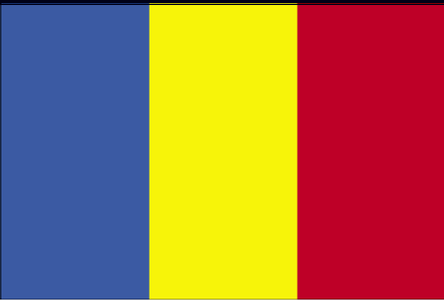FUNCTION AND BASIS OF FOREST MANAGEMENT 1. Forest Functions
In the forest management plan the social economic and ecologic objectives are specified as:
- ensuring protection to areas with poor regeneration conditions (frost spots, cold wind sites)
- wood production for local need or for export, mainly thick timber for saw and structural timber as well as for firewood
In accordance with the social-economic objectives two main functions were assigned to the stands in the forest fund, namely that of protection and production in correlation with their functional category.
This correlation is presented in the table below:
| Group, subgroup and functional category |
Surface |
| Denomination |
ha |
% |
| Gr.I . Special protection forests |
| 1.2 I |
Soils with permanent swamp formation, riverside copses |
56 |
- |
| 1.3 F |
Forests situated in severe conditions for regeneration (frost spots) |
315 |
1 |
| Total Gr . I |
371 |
1 |
| Gr.II Production and protection forests |
| 1B |
Forests meant to produce mainly high quality thick trees for structural timber |
23056 |
99 |
| Total Gr .II |
23056 |
99 |
| AVERAGE |
23427 |
100 |

Analysing the trees according to their primary function and resulting from the application of functional zonation criteria and the management procedures to be employed at the basic unit two management subunits were established:
S.U.P.A - regular high forests with common assortments - 23056 hectares (93%), including all the trees from functional group II (category 1B), functional type IV, primarily intended for timber production and secondly for protection.
S.U.P.M - forests subject to special conservation regime - 371 hectares (1%), including all the trees from functional group I, functional type II, the primary function being that of protection.
The structure of the stands and of the production fund is generally defined in the management plan by regime, end composition, treatment method, exploitability and production cycles. These are the constituents of the management basis which will be dealt with in the forthcoming section.
2. The regime
Regarding the economical objectives set, the actual structure and conditions the high forest system has to be maintained so that it ensures forest regeneration both naturally (seeds) and artificially (afforestation proper) by taking into consideration the dominant species and the actual soil conditions.
3. End composition
The selection of the future species and types of culture was made by taking into consideration the correlation between natural forest types, soil conditions and the productivity of the species.
The selection of the future species is made according to the ?Technical standards regarding compositions, schemes and forest regeneration technologies as well as afforestation technologies of degraded land" in addition to the stipulations in force considering forest conservation, protection and development.
4. Treatment
Depending on the actual formations and functional types the following treatment methods were set forward for the production stands:
- clear cutting to small felling areas or to alternate clear strips in case of the Norway spruce
- group shelterwood system for the mixture of Norway spruce and silver fir, where the regeneration period lasts 30 years.
- for the protection stands conservation and hygiene cutting is applied
5. Exploitability
Technical exploitability is applied for the production stands, which enables the production of huge dimensions of timber assortments.
The technical exploitability age is reached by the age of 106.
Protection exploitability was set for the stands in group I, which corresponds with the time when the protection effects start growing weak.
6. Cycles
The production cycles are only established for the production stands by taking into consideration the following criteria:
- the forest formation and species that make up the forest
- the average exploitability age
- the productivity and actual condition of the mixtures
- the social- economic functions
Taking all the above mentioned criteria into consideration a cycle of 110 years was considered as adequate both in economic and ecological terms.
7. Accessibility
The length of the transportation equipment in the forest is of 115 km, which stands for a density of 24, 5 m2 /ha. This parameter points to the fact that the compartment is adequately supplied with forest roads providing 100% accessibility of the growing stock. It is relevant to mention that the accessibility of the stock was established for the maximum distance of 1,2 km from the middle of the compartment. The possibility of accessability is of 100%.
8. The Allowable Cut
For the majority of the surface the management plan was revised in the years 2002-2004, consequently the forest owners at the Forest Administration of Gheorgheni have an annual possibility of cca. 95.000 square meter/year, 70.000 sqm/year of which make up the forest fund and 25.000 sqm/year the afforested meadows.







